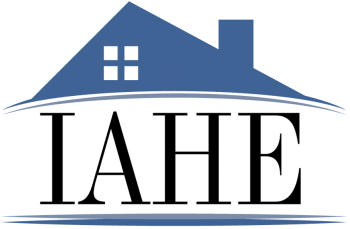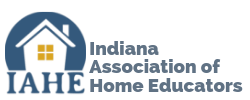I’ve been a fan of learning by doing ever since sixth grade, when my classroom teacher included some experiments and demonstrations for health and science classes. I taught my own children by using KONOs, way back in the days when it wasn’t a kit, and only Volume I had been written, and I added the others as they were subsequently developed. As Jessica Hulcy taught me in my cassette training tapes, we did stuff, we discovered, we read, we drilled, we wrapped things up, and then started a new unit on a different topic. I found that learning by doing was a very effective way to teach. My son laughed when he found out that I set up a digestive system obstacle course for his children on a rainy Saturday, just like we had done decades before. Unfortunately, I didn’t have a hula hoop anymore for our “exit.”
Learning by doing means different things to different educators. In all cases, students are armed with their senses and their own background experiences when they come to a lesson. However, the teacher will do different things with the observations from the senses and that background information, depending upon how they learned to teach.
To some educators, ‘doing’ is a process by which students use their own senses to learn more about a subject. It leads to specific knowledge that the teacher wants to teach. There is a standard of knowledge to learn, such as the life cycle of insects, how to properly punctuate writing, that 2 and 2 are always 4, how scientists study really large and really small things, and how to read. For example, students will raise a butterfly garden or keep an ant farm to carefully observe the life processes about which they have already been taught. Or perhaps a teacher will use a butterfly garden to pique the interest of a child, but the teacher is still teaching the “egg, larvae, pupae, adult,” stages to the child. He/she then will help the child to find other insects which follow this life process, and then will find others which do not. There is doing, but there is also reading, listening, memorizing, narration, writing, etc. Inquiry is one small part of the learning process, not the goal of it.
To a constructivist, inquiry-focused teacher, doing is a process by which students make sense of the world around them. They build their own knowledge. Note that there is not a carefully prepared list of facts to know: find the 50 states on a U.S. map, memorize the times tables, learn what the author was trying to say in this piece of literature. No, the student brings their own knowledge to the table and builds upon it, with the teacher facilitating the learning. Learning objectives are stressed, not the goal of learning subject matter. Learning by doing in the public school setting has the goal of esoteric learning objectives, such as reaching consensus as a group, teaching tolerance of others’ viewpoints and beliefs. In other words, truth and reality are not looked upon as absolutes, but moving targets in a changing society. And, actually, the primary goal of postmodern education is not to impart knowledge, but to change the values and belief systems of the students, preparing them for that changing society.
It’s easy to see how changing values are taught in social studies and even literature. In literature, the viewpoint of the author is not important, but the reader’s viewpoint and his/her experiences. In social studies, the current experiences of the student are important, not the experiences of the person studied, within the context of culture at that time. In a homeschool setting, teaching parents usually compare the absolute truth of scripture with changing society. Instead of attempting to conform our children to a changing society’s expectations, we are aiming for them to be “transformed” by the renewing of their minds (Romans 12:2). We are expecting them to be lights in a dark world, not minions working for the government’s idea of society’s greater good.

Am I over-reacting? What is so bad about this type of learning by doing? Well, it sets learning backwards hundreds of years. Students are learning like Aristotle, not like Newton and Kepler. And not just in science, but also in every other subject. Newton claimed to stand on the shoulders of giants of learning that had gone before him, so he could see further. We are not expecting our children to learn what the “giants” have learned, and stand on their shoulders so that their excellence will be greater than their forbears; we are expecting them to stand among the little people and reinvent learning for themselves.
The objectives of inquiry learning are very limiting in other ways. They limit the understanding of our system of government, because students are not taught to understand what the authors of our founding documents were saying. Students are taught to understand these documents only as what they mean to them in the here and now. Obviously, that will limit our children as they take their place in society as adults. Will they know and understand what their elected leaders are doing? Or will they be compliant drones in the society’s workforce?
The objectives of inquiry are limiting in every subject, but especially in science. The scientific method, which the brightest minds of the last millennia developed, is tossed aside, and in its place is inquiry. Inquiry is only one part of the scientific method. If we limit our science to this point alone, it is (as I said before) taking us back to Aristotle. We know how that he incorrectly induced and deduced an earth-centric universe.
The scientific method is not only observable through inquiry, but it is also verifiable and repeatable, so that other scientists can learn from it. They can also discount another scientist’s discoveries, following the same processes that the first scientist said that he/she used. If it is not verifiable or repeatable, then it is only science by consensus. Consensus-reaching is not science at all. Remember, the consensus of the scientific world at the time of Galileo and Kepler was that the earth was the center of the universe. And that consensus has been found through the scientific method to be incorrect; the universe is much larger and vastly different than they imagined.
When I was in college, I learned that I was in a battle for education on the campus. The math department still wanted specific skills taught, using manipulatives, and making sure that students understood what they were doing. The education department wanted math taught as consensus-building group-think. I had classes in both methods. Unfortunately, the latter has won out in Common Core, and in Common Core “Lite,” like we have in Indiana. And it is happening in all other subjects as well.
There are two types of learning by doing: that which points to specific knowledge and skills, which can lead to the acquisition of greater knowledge and understanding, or that which leads children to build their own knowledge, changing their values along the way. Which way do you want your child to learn?
Debbie Ralph Burks is the wife of a godly, sweet husband of 38 years, the mother of three amazing adults, and grandmother of five (who are homeschooled.) She started teaching when she was five: she taught herself to read, and then her three year old sister. She homeschooled her children, and then earned a degree in elementary education, and 1st-9th grade science. Her honors coursework was mostly done in collaboration with Indiana Partnership for Young Writers. She taught science in the middle school and elementary school at Hasten Hebrew Academy. Her allergies are so severe that she no longer teaches in the classroom. She has continued teaching in her church, and teaching writing to small groups of homeschoolers, where she can better control her teaching environment so that she will not have severe allergic reactions.
